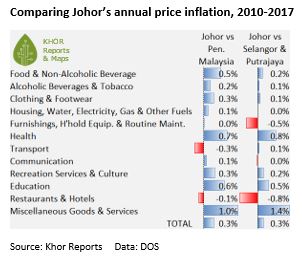#Malaysia #coconut #imports have seen a notable surge from Dec 2017. Khor Reports’ has taken a preliminary look at some of the data surrounding the story "Millions of local coconuts left unsold," 27 Dec 2018, The Star.
The Department Agriculture reports reports some 80,000 hectares of coconut planted areas mainly in Sabah, Sarawak, Johor, Perak and Selangor, mostly planted by farmers.
A specialist said, "The situation on the ground is bad. Who ever approved the (imports) were doing the local kampong folks a disservice. If you speak to the small farmers on the ground they are annoyed with (the imports). The small players - and with that the voters - will be disadvantaged and they will be confused because they see no action being taken." (Interview, 30 Dec 2018).
Indeed, imports from Indonesia were about 130 million kg in 2016, 180 million kg in 2017, and 187 million kg in 9 months of 2018 (Jan-Sep, the data is not yet available for Oct-Dec 2018) with peak imports of about 25 million kg/month in Mar, Apr, May 2018. 1 kg is about 1 nut.
Jul 2015 - Sep 2018 monthly data. Source: Khor Yu Leng, Khor Reports - Segi Enam Advisors.
In reviewing the monthly trade data prepared by Khor Reports (see line graph above), a coconut expert noted, “This is very revealing and it is the imports that is causing this problem. There is a glut in the markets, and it is still a problem.” (Interview, 9 Jan 2018).
Imports were equivalent to 15-20% of production in mid-2015 and imports rose to around 55% production-equivalent in Mar-May 2018, around the time of the regime-changing 14th General Election in May 2018. In retrospect, we may ask if coconut problems added to rural angst and the big protest vote among younger voters in rural and semi-urban areas against UMNO-BN.
After the election, it appears that UMNO-BN’s high coconut imports policy was broadly maintained; with imports easing under the new Pakatan Harapan administration, but it remained significantly above trend, Jun-Sep 2018 (see chart below).
The top 4 suppliers of Malaysia imports in Sep 2018 were Indonesia (by far), Philippines, Singapore (surprisingly) and Thailand. Looking at a longer time-frame, coconut imports to Malaysia have risen some 10-fold from mid-2008 to mid-2018, but there was a time period when imports were clamped down, notably mid-2013 to almost mid-2014, the period after the 13th General Election (held in May 2013).
Jul 2008 - Sep 2018 monthly data. Source: Khor Yu Leng, Khor Reports - Segi Enam Advisors.
Looking ahead. The coconut imports data for Oct 2018 and forward will no doubt be closely watched. The question is: What will be Malaysia’s policy on coconut imports be in view of complaints from local coconut traders and farmers ?
Comparative context. The palm oil sector in Malaysia has also seen domestic stockpiles rising to record highs. Reuters reported, “To counter the Indonesian import, (Minister) Kok said the government is "currently encouraging our companies to use domestically produced palm oil to reduce the stockpile…. By reducing imports, we could see a significant reduction in palm oil stocks in Malaysia and this would boost prices." " For both palm oil and coconut, Indonesia holds significant cost advantage.
Indonesia perspective on farmer interests. In the run up to the Indonesia presidential election, Tempo (9 Jan 2019) reports that "candidate pair number 02 had committed not to use identity politics in the 2019 presidential election...The economic programs are the answer to the problems experienced by people at the grassroots level such as farmers, laborers, and housewives. “When we visit the regions, there must be complaints from residents, especially from farmers,” he said... if Prabowo-Sandiaga becomes president and vice president, they will try to reduce the import of commodities that can be produced in Indonesia." Earlier, SCMP reported (19 Dec 2018) that "Indonesia is the world’s second-largest sugar importer and keeping food prices low is critical for voter support ahead of April’s vote. But the country is also home to a vocal contingent of sugar farmers who want to sell for higher prices.... Indonesia is already the world’s second-largest sugar importer behind China though by some accounts, it is actually first. Raising its import quota would feed growing demand from hungry consumers...Data from state logistics agency Bulog indicates the decision to allow more imported sugar has stabilised the price at about US$1 per kg. This, however, has been seized upon by Widodo’s political rivals as evidence his administration will prioritise consumers at the expense of farmers."
#Jokowi #Prabowo #Sandiaga #sugar #palmoil #coconut #PakatanHarapan #UMNO #import #tradepolicy
Notes:
Coconuts policy is lead the Ministry of Agriculture. Palm oil policy is led by the Ministry of Primary Industries.
Product: 0801 Coconuts, Brazil nuts and cashew nuts, fresh or dried, whether or not shelled or peeled. For Malaysia, this category is dominated by coconuts.












